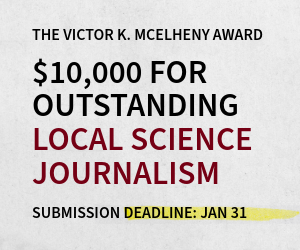BY KATIE PALMER
The jury is out on the use of neuroimaging as hard evidence in the American courtroom, concluded a panel of legal and academic experts convened on 20 February at the 2010 AAAS meeting in San Diego. The panel, composed of California Superior Court judge Luis Rodriguez, litigators Henry Greely and Robert Knaier, and expert witnesses James Brewer and Michael Rafii, presented a mock trial of the hypothetical Will Johnson, accused murderer and victim of a severe brain lesion.
Neuroscience is providing new tools to visualize the brain with striking detail. One of these is structural MRI, or magnetic resonance imaging. That method depends on the alignment of water molecules in different tissues in a powerful magnetic field, as Brewer, assistant professor of radiology and neurosciences at the University of California, San Diego (UCSD), explained. The result is an image of the physical structure of the brain.
Though MRIs produce reliable images, the conclusions drawn from them are subject to interpretation. In the courtroom, then, the risk exists that impressive-looking scientific evidence can mislead jurors. "Neuroscience seems to have an almost hypnotic ability to make people believe strange and ludicrous things," said Greely, professor of law and genetics at Stanford University.
The "trial" focused on a hypothetical murder committed, possibly, as a result of a severe lesion in Johnson's frontal lobe as detailed in an MRI. The argument put forward by Knaier suggested that, as a result of the damage to the frontal lobe—the part of the brain involved in such things as planning, organizing and problem solving—Johnson would be unable to form an intent to kill and therefore could not be held fully responsible for his actions.
Frontal lobe lesions, caused by trauma or tumors, are indeed associated with alterations in personality and behavior. This is most clearly seen in the famous example of Phineas Gage, a railroad worker who miraculously lived after an iron rod pierced his frontal lobes, leaving him aggressive and disinhibited. This information has led to a hope that neuroimaging and similar tools can give courts a "fingerprint of the mind," said Rodriguez.
However, the correlation between these lesions and behavioral change does not mean that a lesion always results in behavioral abnormalities, or that all behavioral abnormalities can be linked to discrete lesions. In a clinical setting, where MRIs are used in the diagnosis and treatment of neurodegenerative and neuropsychiatric disorders, misleading results occur frequently.
Furthermore, impairments in executive functions, including planning and inhibiting inappropriate actions, are known to fluctuate from day to day. As Rafii, director of the Memory Disorders Clinic at UCSD, said, "the inability to form an intent to commit murder would likely be associated with an inability to form an intent to put on pants," but there is no way to predict whether that intent exists at any given moment.
Though MRI is not ubiquitous in civil or criminal cases—such cases in California over the past four years number less than 100, Greely said—there are already worries about potential underuse of the technology. If courts do come to accept MRIs as evidence of mental capacity, Brewer asked, "Are you depriving defendants of evidence if they cannot get an MRI?"
This case, taken from initial court hearing to verdict in a mere three hours, left many questions unanswered. Though the interpretation of MRI evidence on its own is not yet reliable enough to stand on its own, it can be useful when combined with psychiatric and behavioral evidence, according to Greely. "The law doesn't care about brains, the law cares about minds," Greely argued, and it remains that the most common and accepted methods for understanding the mind are behavioral, not scientific.
Katie Palmer is a fourth-year undergraduate at Williams College in Williamstown, Massachusetts, majoring in chemistry and neuroscience. She writes and edits for the ScientEPHic Quarterly and is looking forward to following science writing wherever it leads. Reach her at k.malone.palmer@gmail.com.



